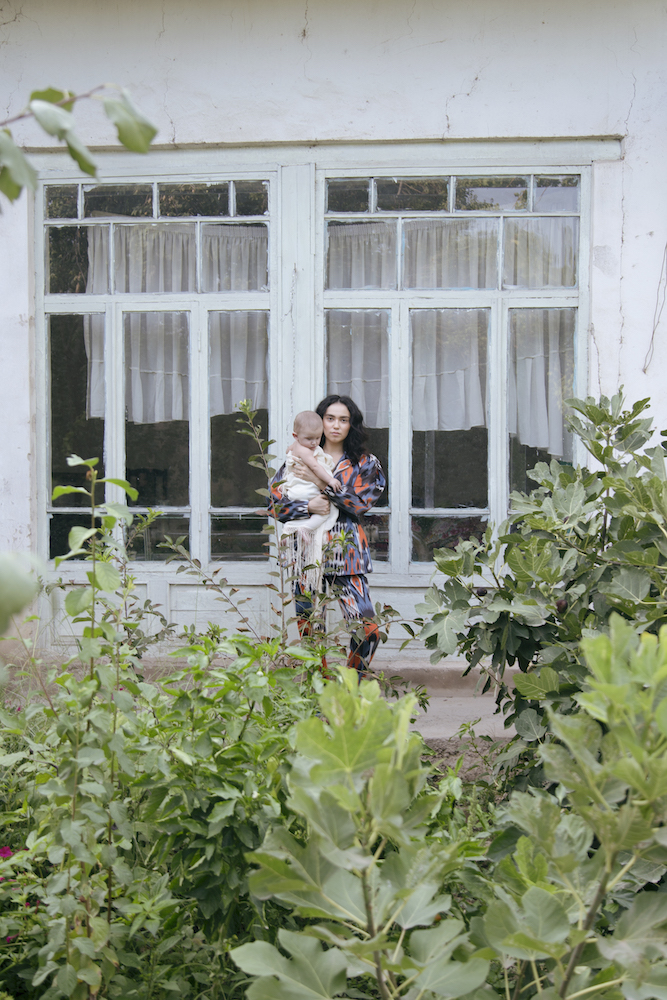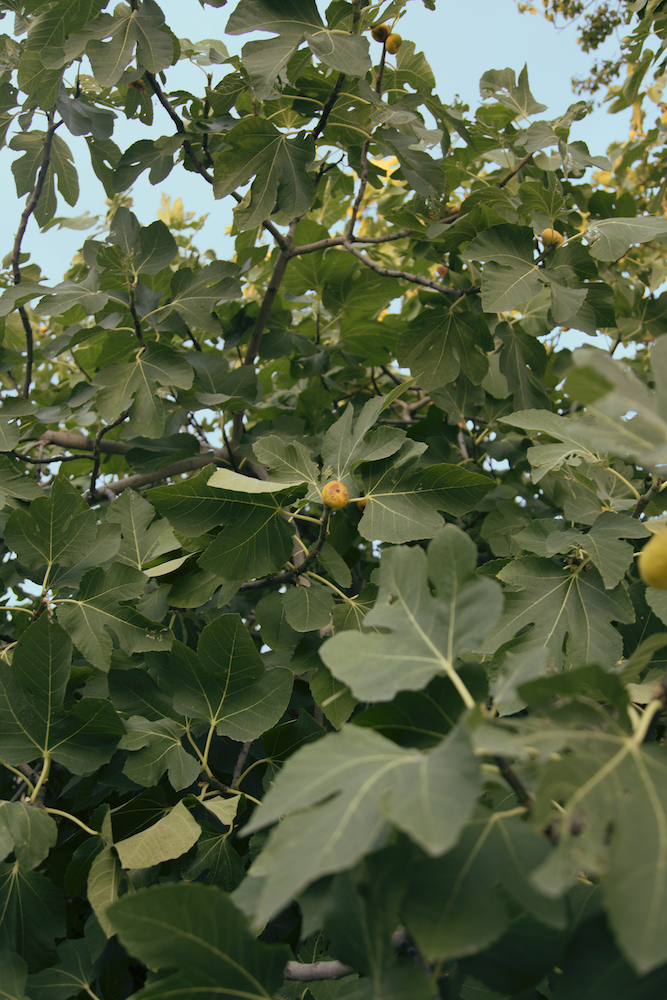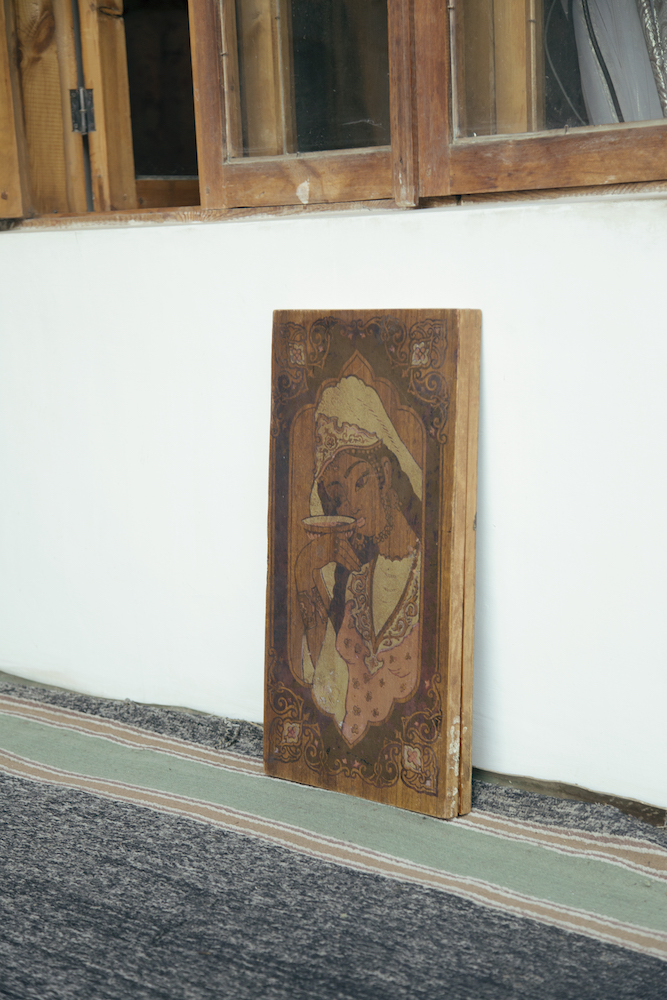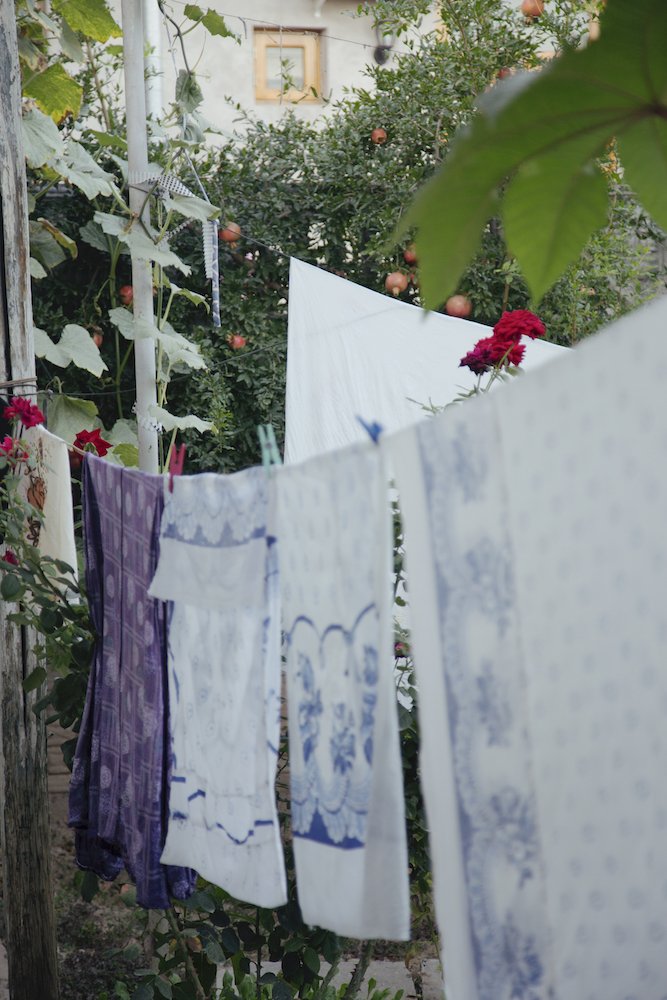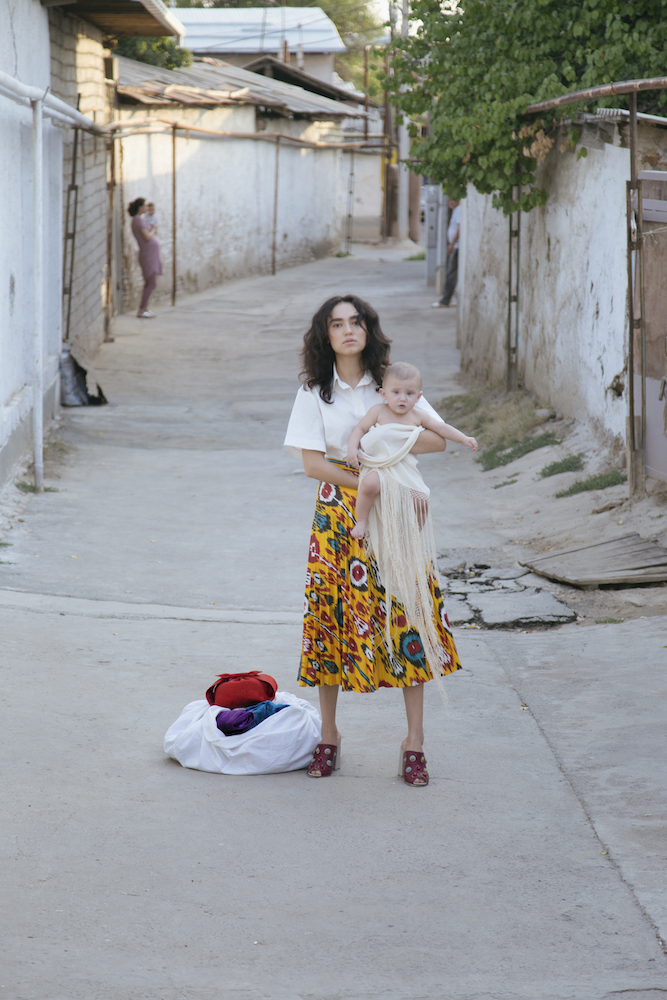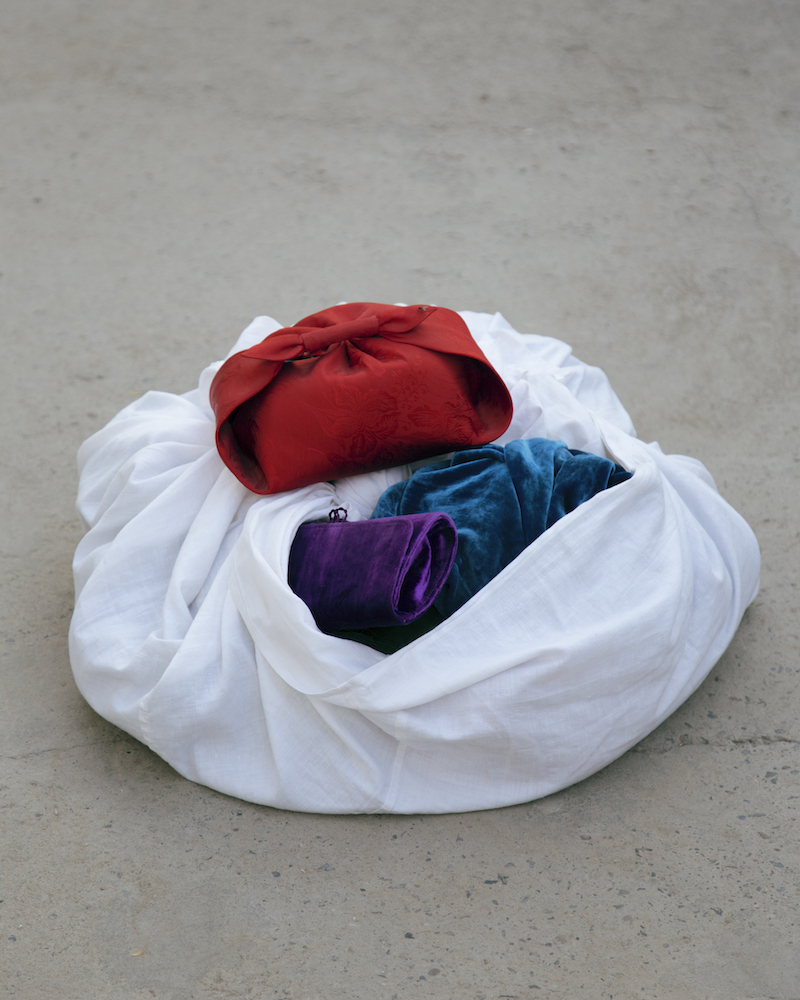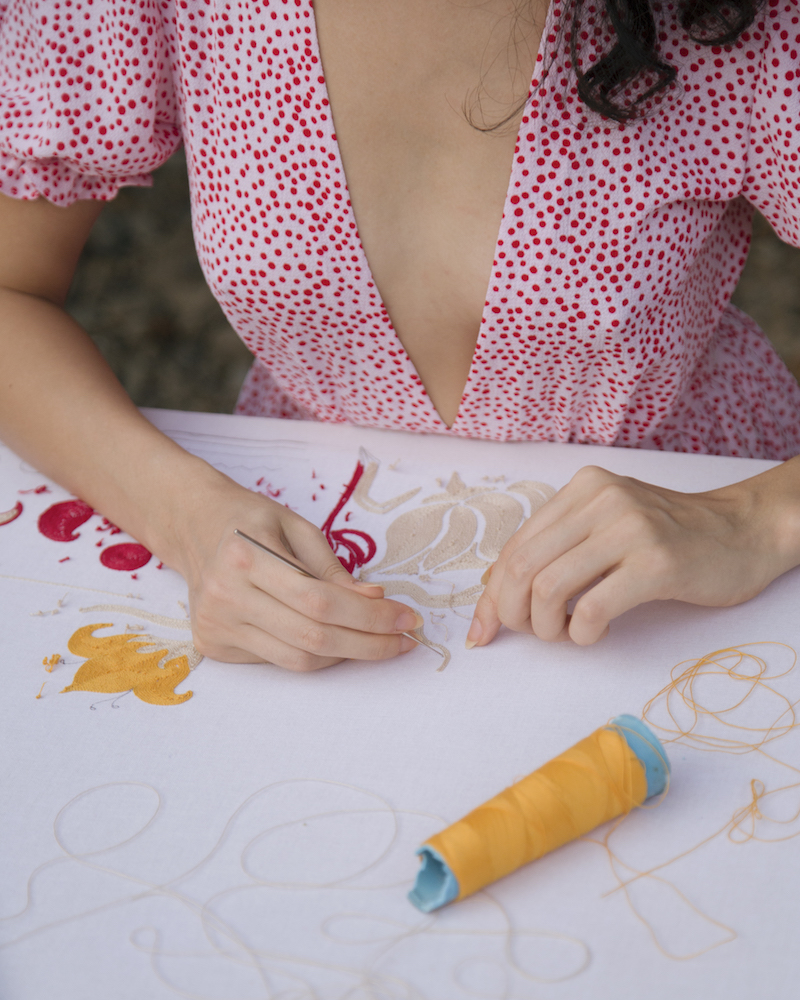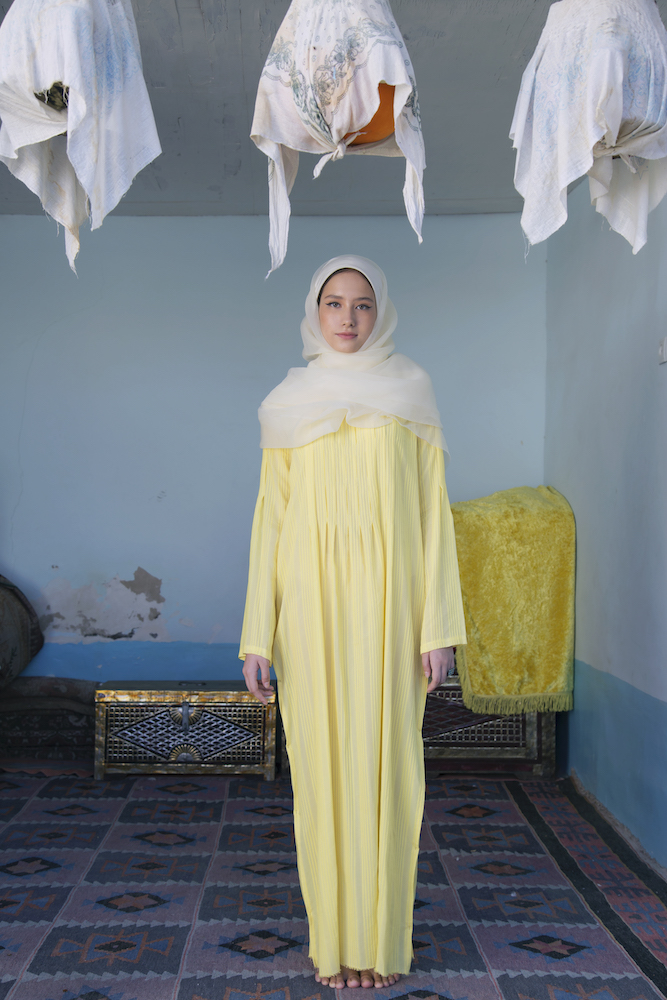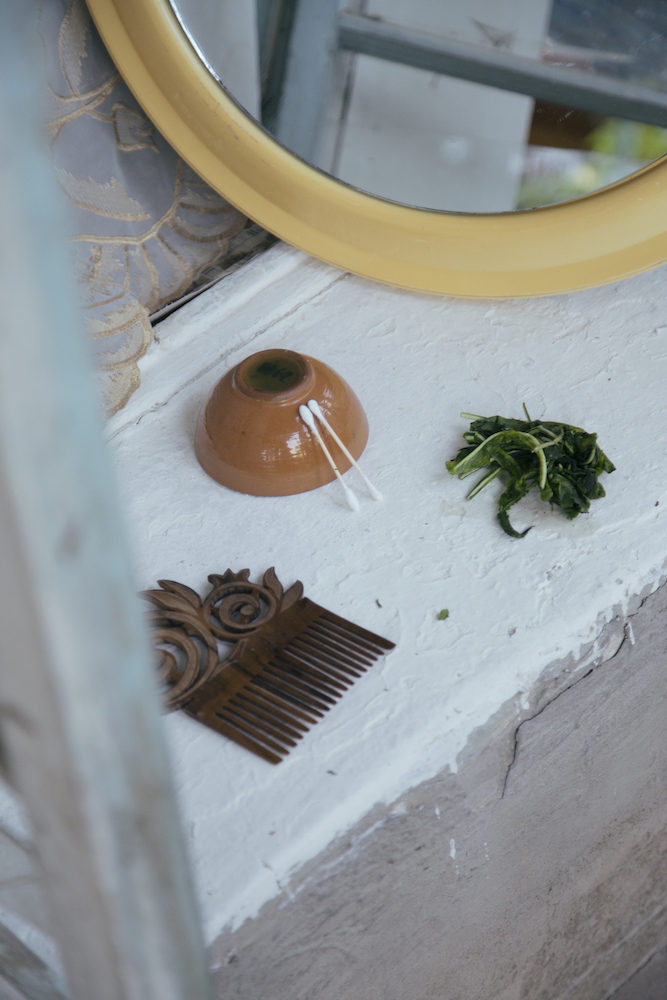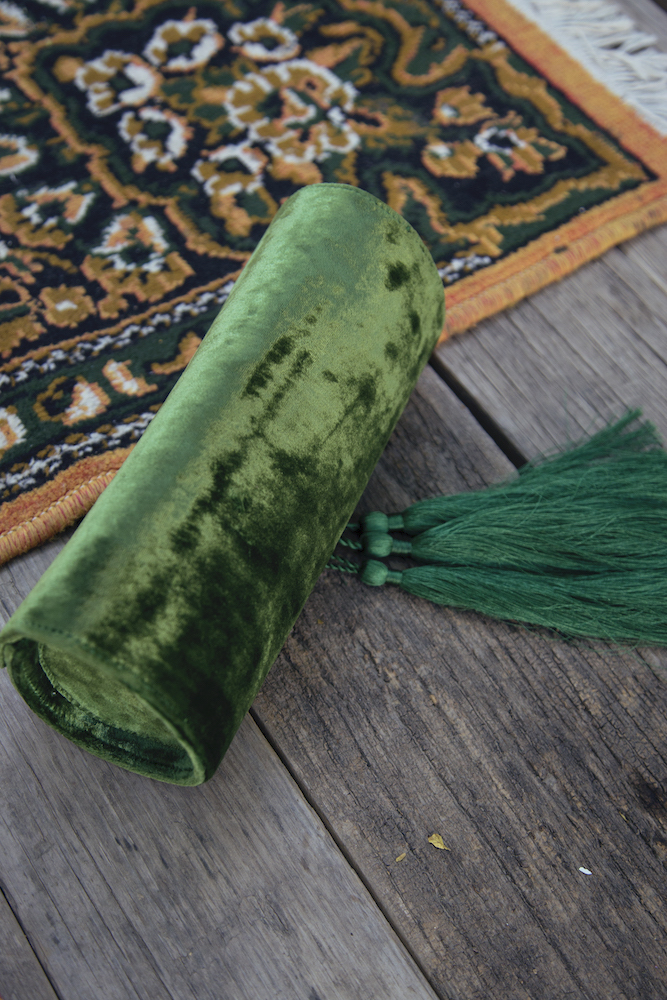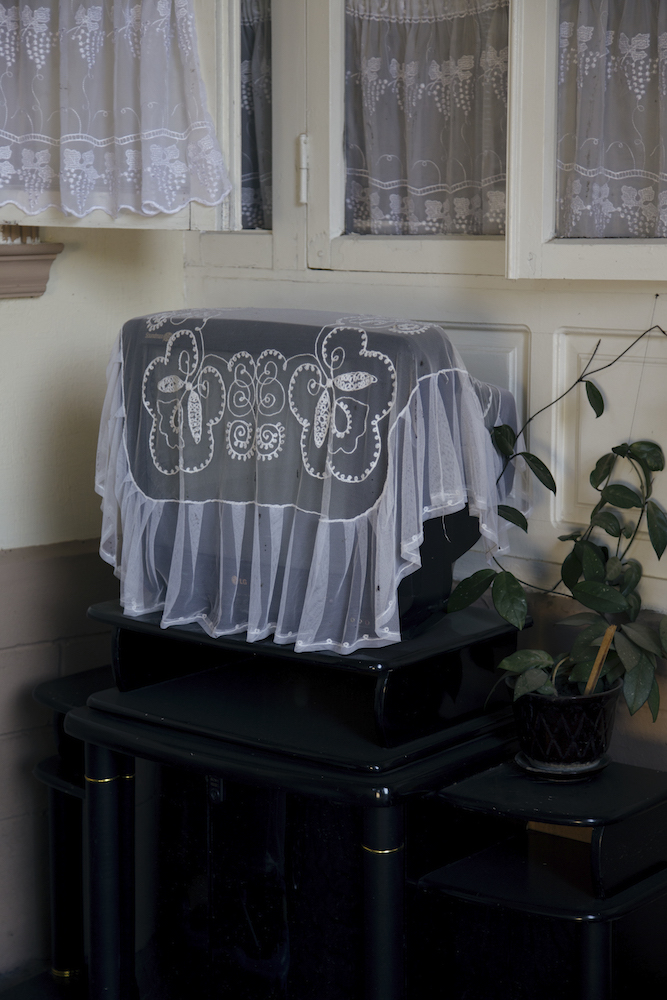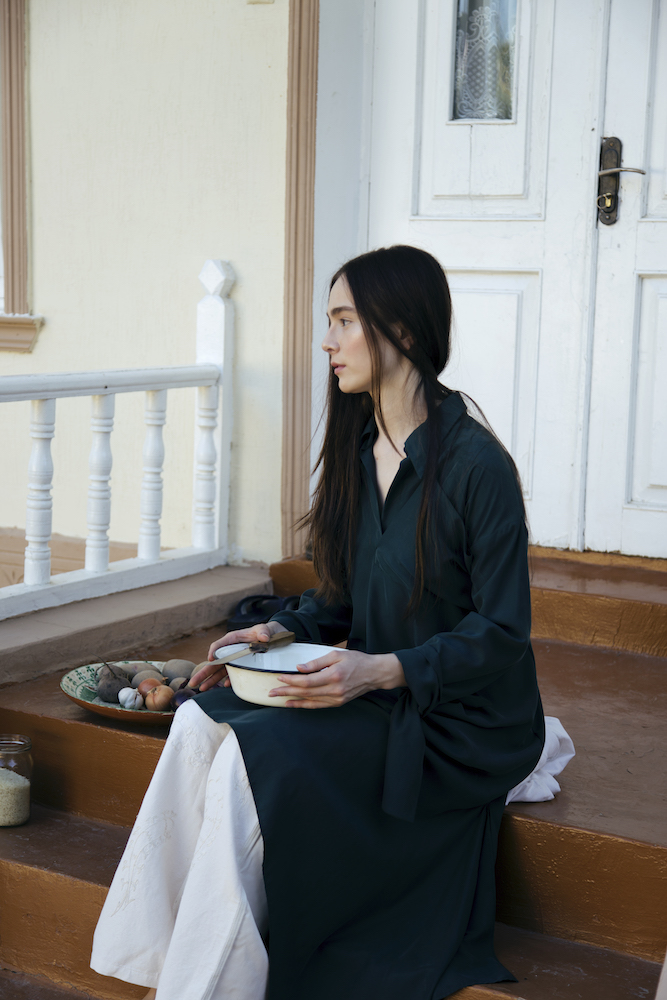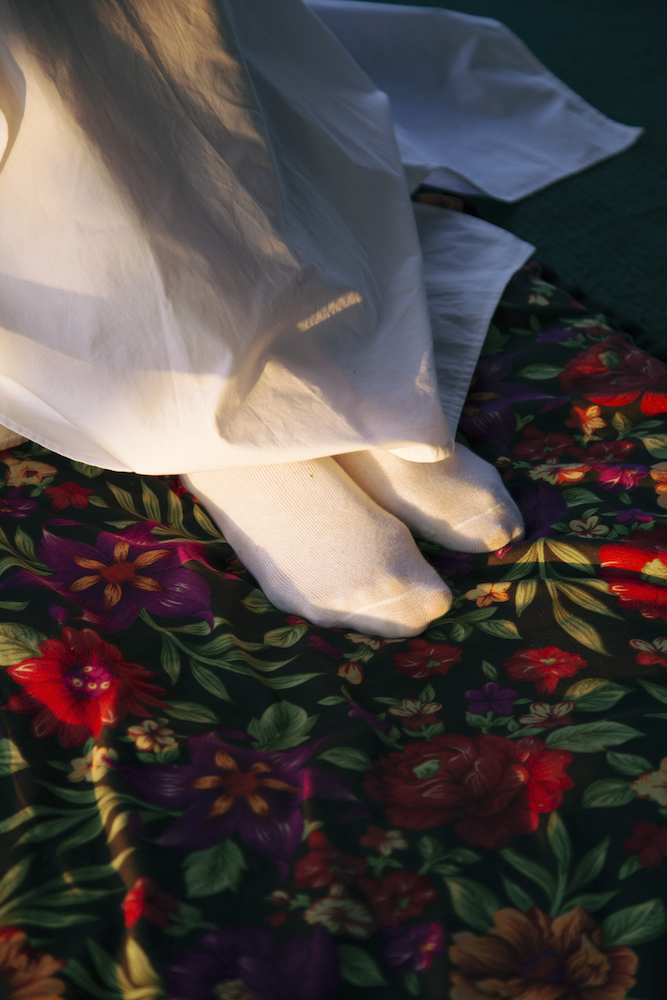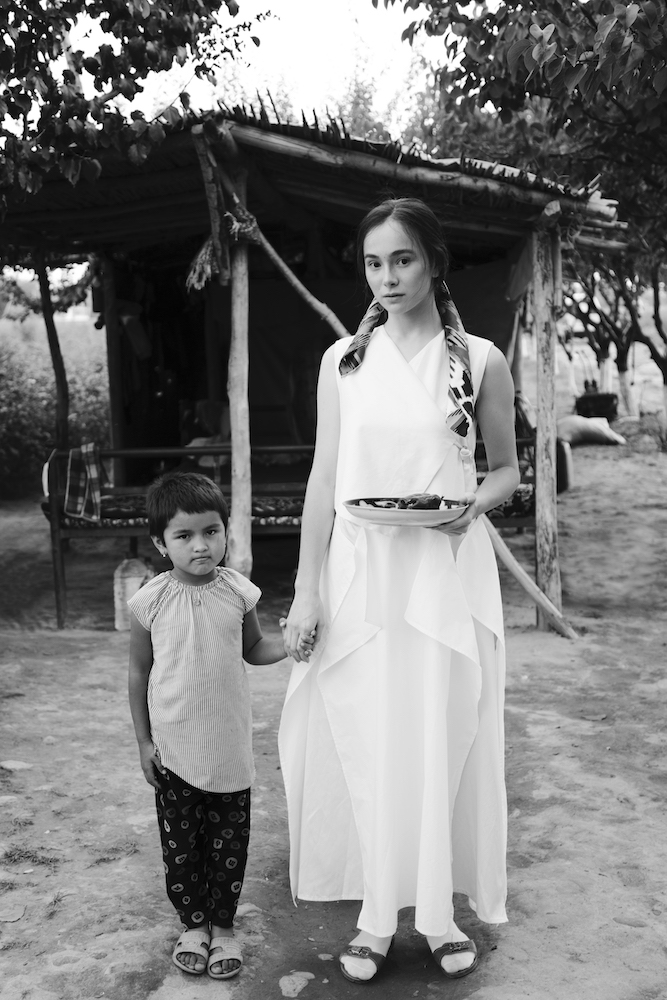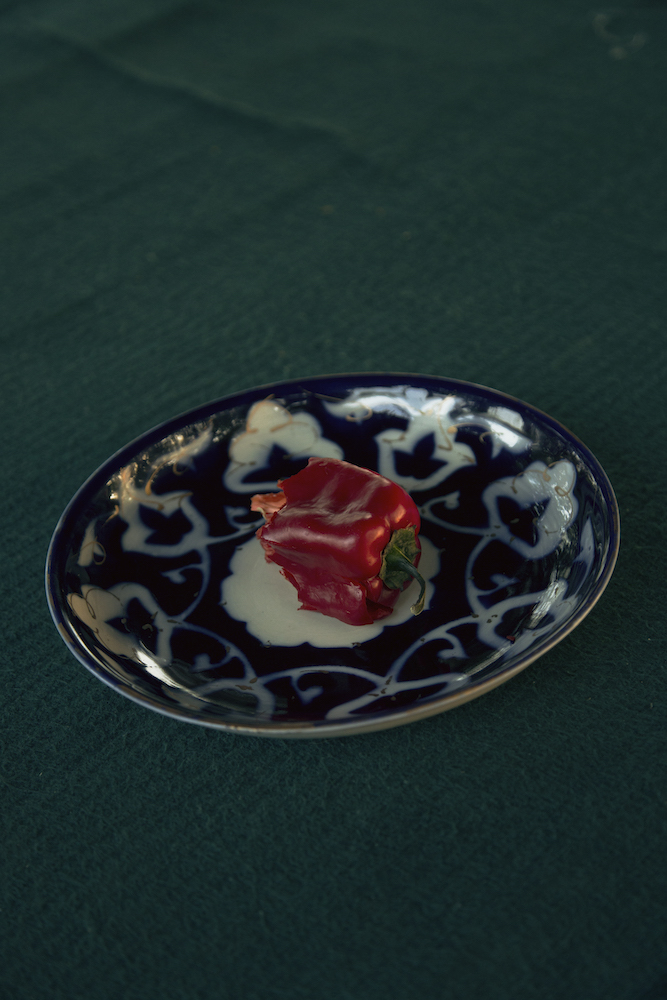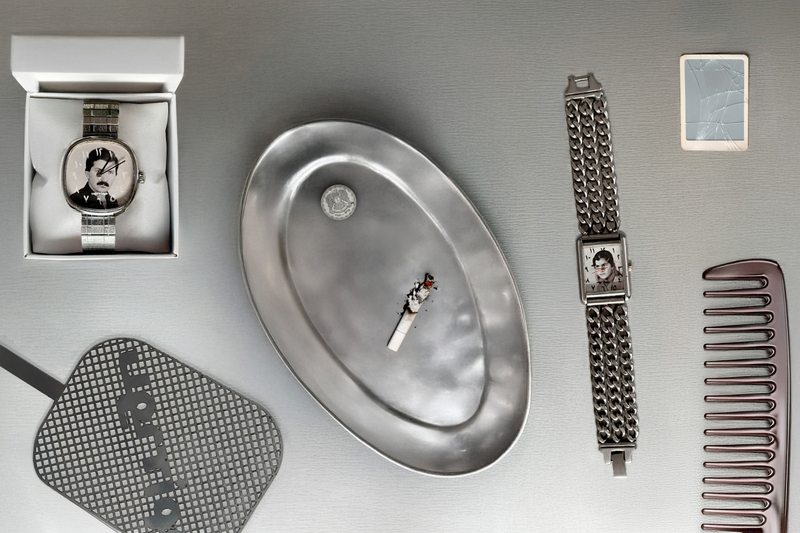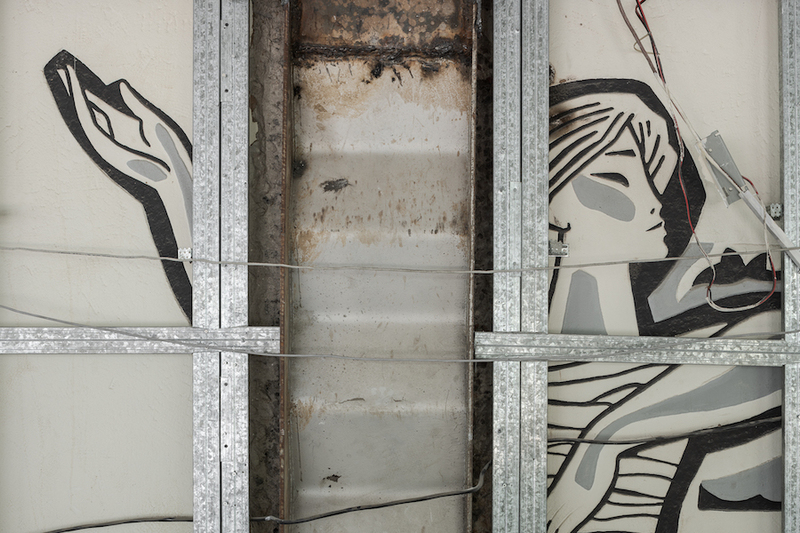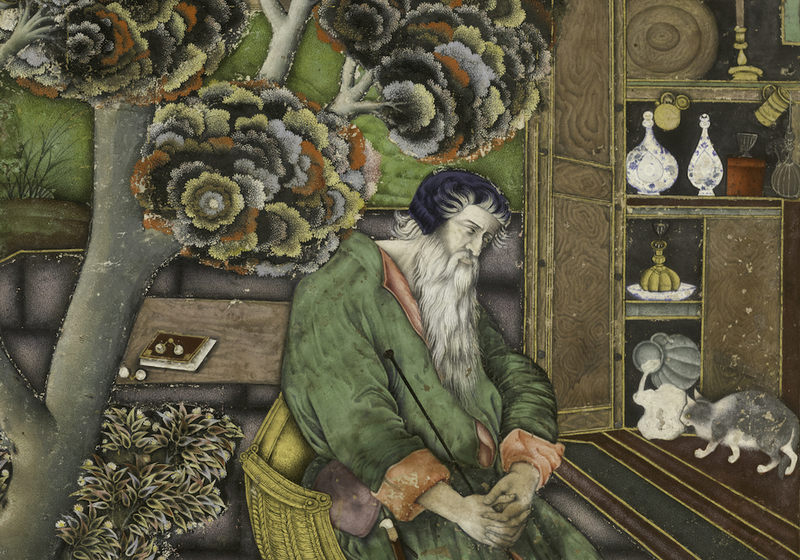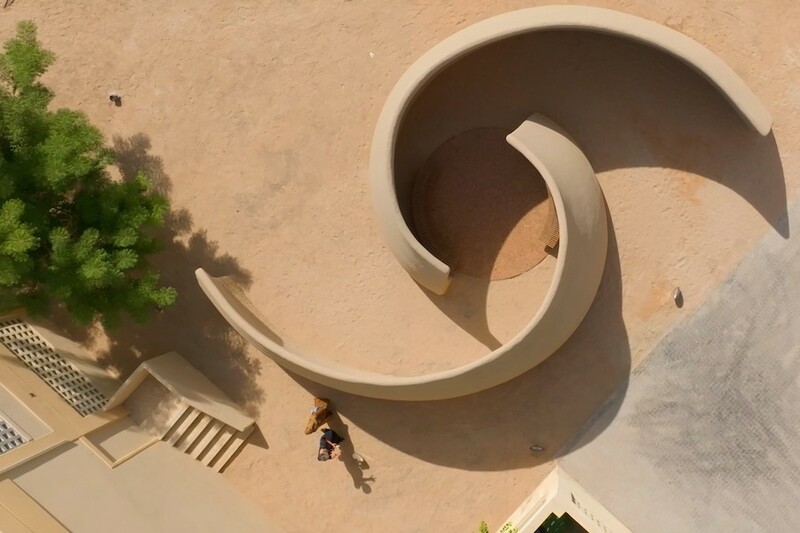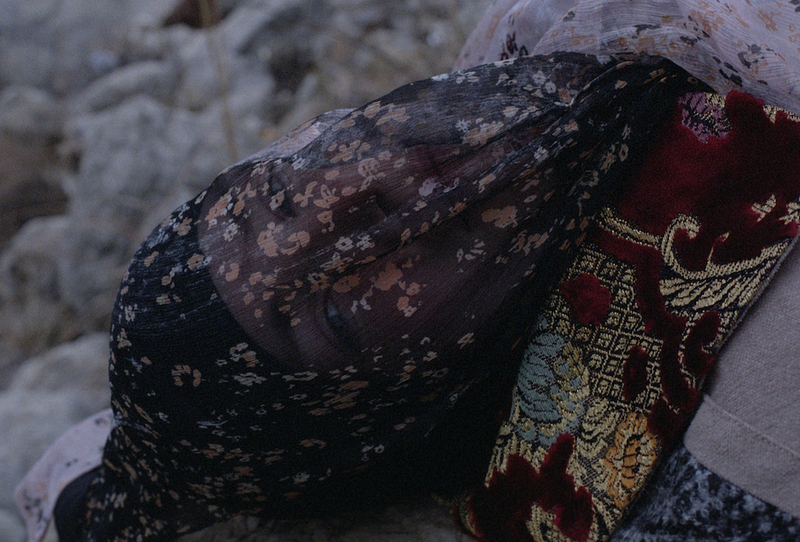Kamila Rustambekova and Kamilla Akhmedova explore the status of women in present-day Uzbekistan. Using a photo shoot styled with clothes by local designers as a means to tell a story, they speak about the need to respect any kind of choice—regardless of whether or not it meets the criteria of “progressiveness.” This is the first contribution to EastEast's new Community section, which will feature texts and projects independently initiated and carried out by our readers.
in which girls debunked patriarchal stereotypes. But it was interesting for us to show not only those who are actively fighting for their rights, but also more “traditional” girls. I wanted to make a project that would make it clear that any choice should be respected: whether you want to stay single or get married, live with your parents or on your own, make a career or take care of your family, wear a hijab or not—it's all about your choice. On the one hand, this is a fashion shoot, on the other—a social project.
. They have different destinies and different values, but all strive for the highest goals and find their own way to express themselves. Each has an occupation where she reaches self-realization.
Sitora is a married woman. She does household chores, works in the field, and raises her children. She likes being involved in all household chores and she does them well, in her free time she reads.
Elina is a Muslim. She covers her head, fasts, and prays. Her choice does not prevent her from expressing herself with the help of makeup and clothes in the family environment. Moreover, she takes care of the garden and grows flowers—her daily contemplation of beauty.
The third protagonist—Dina—found the courage and strength to file for divorce, take her child, and start a new life—she met a girl with whom she now lives in a Boston marriage. Dina makes a living by embroidering traditional suzanisuzaniA traditional sewing technique that in Persian translates to “sewed by a needle.” Also common in Turkey, Tajikistan, Afghanistan, and Iran..
As a stylist, I needed to take into account the nuances associated with religious norms in clothing. For example, in Orthodox Muslim families women are not encouraged to wear bright clothes and makeup outdoors so as not to attract too much attention. Also, their hair should not be revealed. However, in foreign fashion shoots, Muslim women wear trouser suits and bright prints. According to our concept, Elina stays home so as not to hurt the feelings of believers.
In general, it is very interesting to study the interpretations of the Koran in relation to modern fashion: for example, it turns out that Muslims cannot wear counterfeit brands, since theft is condemned in the Koran. It is also advisable to wear clothing made of recyclable materials and produced in decent conditions. In theory, religion does not support labor where women churn out low-quality items for 2 USD an hour. One way or another, today there are no clear interpretations of Sharia law, thus each interprets them in their own way, depending on one’s environment.
We did the shooting in the mahallah—a neighborhood, a kind of a small community, where everyone knows and helps one another. There are still some traditional old houses left around, and some residents are ashamed of them, often assuming that “European-style” renovation looks better.
We tried to convey Uzbek culture not only through the setting and clothing, but also with the help of small elements we are familiar with. For example, a can of sour milk and fresh flat bread appear in the shot—an incredible morning delight that every Uzbek knows perfectly well. Figs, often homegrown, are a real taste of summer. Vegetables grown in their own kitchen gardens or fields are what kids often enjoy the most, stealing and eating them between games.
Project Team
Concept: Kamila Rustambekova and Kamilla Akhmedova
Photo: Kamila Rustambekova
Style and design set: Kamilla Akhmedova (“7/1 Bureau” agency)
Models: Dina Makhmudova, Sitora Mamadrizaeva, Elina Brunkovskaya (NN Models), Seva
Makeup: Ruslan Dominov
Clothes: Anor Couture, Dildora Kasimova, Elena Milberger, J. Kim, Moel Bosh, NNAM, Tais & I, Fugu, Uzbek vintage
Jewelry: Holmuradov Design
Translated from Russian by Olga Bubich
